Delos - the magical Greek Island most don't know about
In September 2024, I joined a group to tour Greece. We saw many archaeological sites throughout Greece, and visited the most famous Greek Islands: Mykonos, Santorini, Crete. However, I was most interested in visiting the UNESCO site on Delos - the forgotten island. With our tour director's permission, I led a small group of two for a one-day independent exploration. In Delos, we went back in time to the mythological Greece. Everywhere we see are the ruins from over 2000 years ago. It is the most magical archaeological site without any crowds. A truly remarkable, unique, & rewarding experience of my trip to Greece.
Ting Lu
10/28/2024
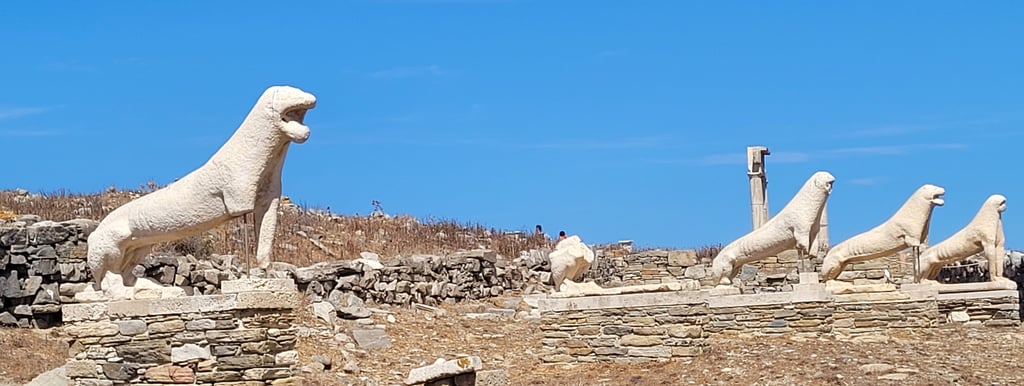

How to get there?
You can travel to Delos by taking a 30-minute ferry ride from Mykonos. The ferry leaves Mykonos old town port in the morning, 10am and 11:30 am. The return-to-Mykonos ferry leaves Delos at 1:30pm and 3pm. This is an inhabited island without any facilities, everyone must catch the last ferry by 3pm to leave the island. I am sure camping is not a legal option.
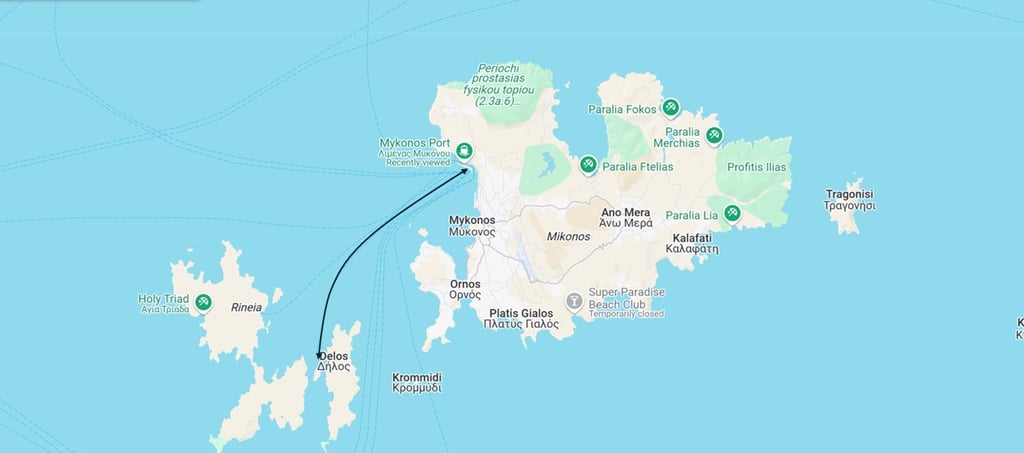

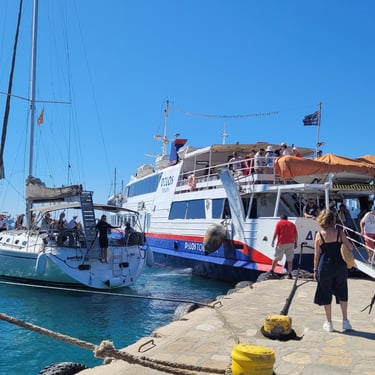
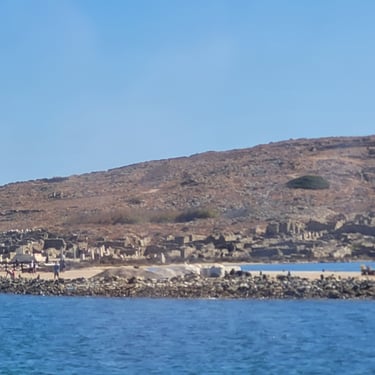
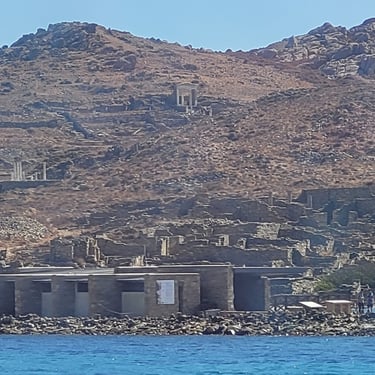
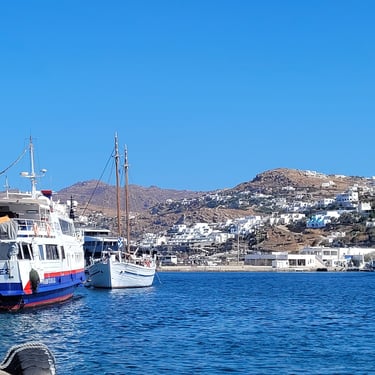
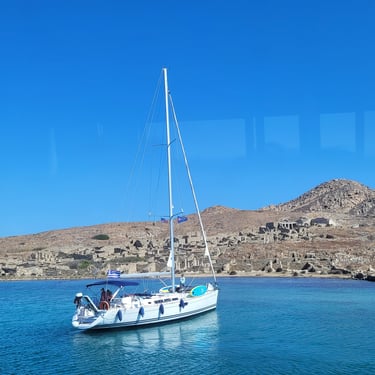
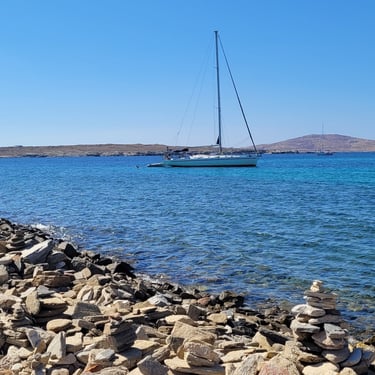
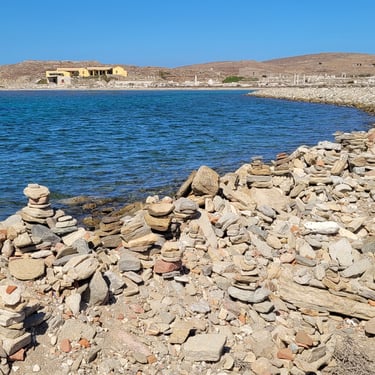
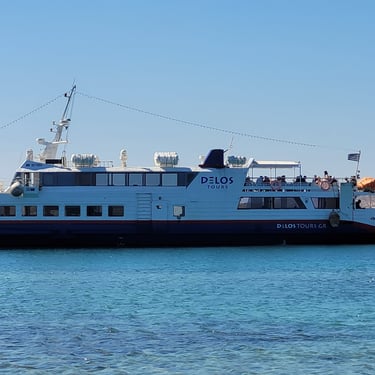
A long & glorious history before Christ
Delos (just 6.85 km2) was the most sacred of all Greek islands in antiquity. According to the legend, it was here that Apollo-Helios, god of daylight, and Artemis-Selene, goddess of moon light, were born.
Early history
Delos was first settled in 3000 BCE.
The island was home to simple dwellings built on the hill Kynthos.
The Mycenaeans settled in a valley by the sea in the late 15th century BCE.
Religious significance
Delos was the birthplace of Apollo and Artemis, the twin gods of light and the moon.
The Apollonian sanctuary was established at least by the 9th century BCE.
The island was a major cult center for Dionysus and Leto, Apollo and Artemis' mother.
Commercial significance
Delos became a free port in 167 BCE, attracting merchants, bankers, and ship-owners.
The island became a major trading center in the 2nd and 1st centuries BCE.
Decline
The island was sacked by pirates in 69 BCE and by Archelaus, a general of Mithridates VI, in 88 BCE.
The island's commercial center and sanctuary declined due to changes in Roman trade routes and pirate attacks.
By the 2nd century AD, the island was mostly abandoned.
UNESCO World Heritage Site
Delos is a UNESCO World Heritage Site.
Tour Delos with Rick Steves' book
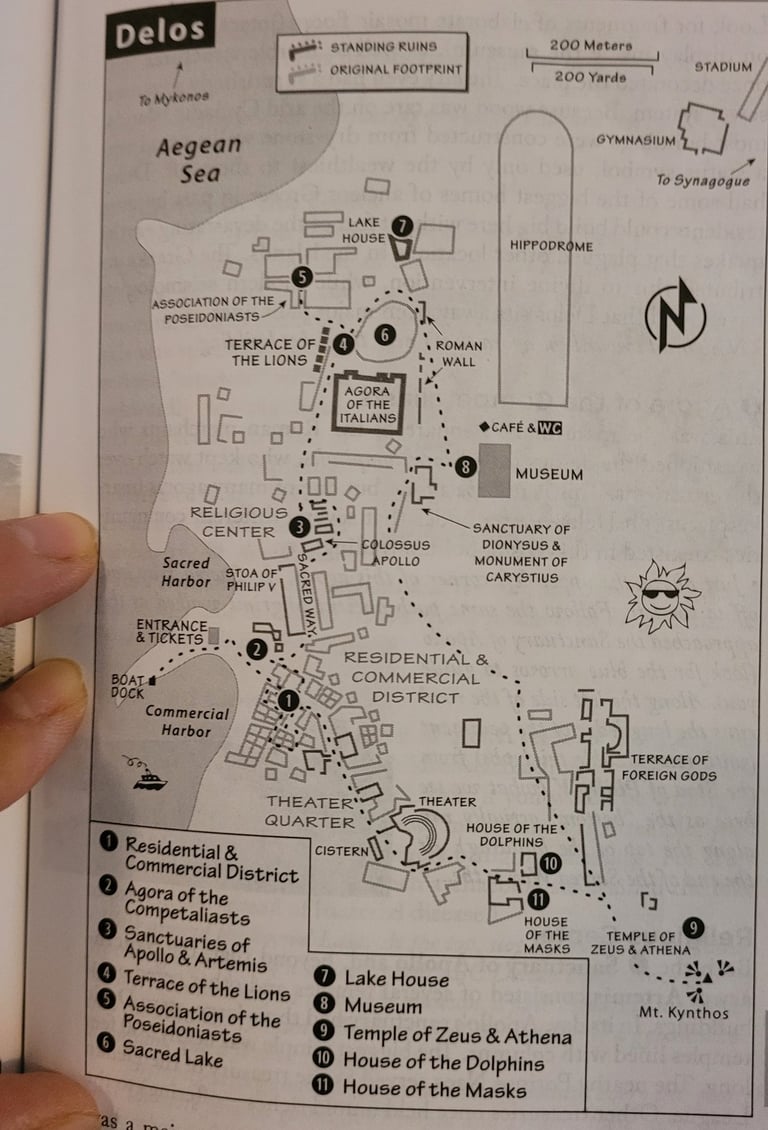

The ticket to the archeological site includes a very detailed map, marked with hundreds of points of interest.
With only 3-hour walking time, I found Rick Steves' Greece Guidebook is a very helpful resource. You can walk around and see most sites in a simple clock-wise loop, starting & ending at the boat dock.
Residential & commercial district
Agora of the Competaliasts
Sanctuaries of Apollo & Artemis
Terrace of the lions
Association of the Poseidoniasts
Sacred Lake
Lake House
Museum
Temple of Zeus & Athena
House of the Dolphins
House of the Masks
Residential & Commercial District
This area is closest to the harbor. I imagine it was convenient for the merchants to receive goods once the commercial boats arrived in the harbor. You can still see the stonewalls of the individual houses and shops lined up on the street, even though some buildings are submerged under water today.

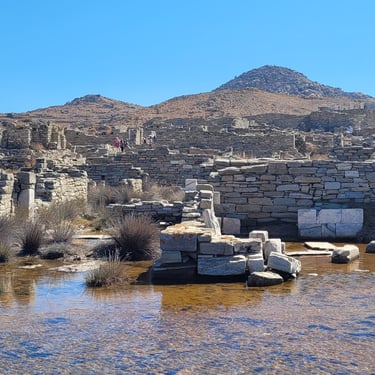
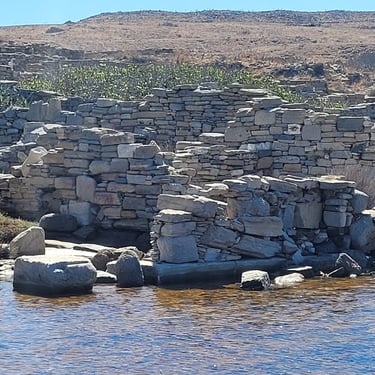
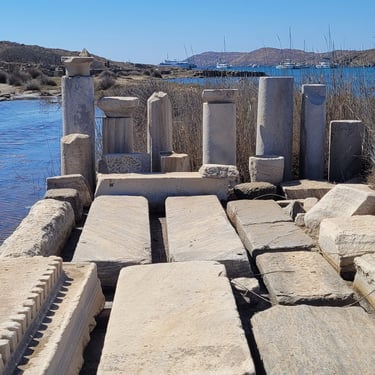
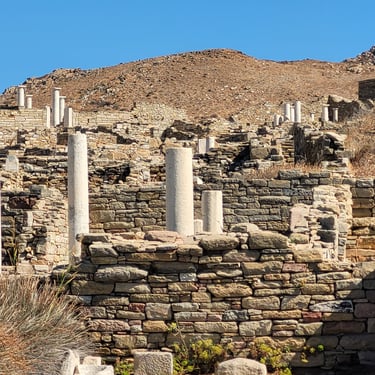
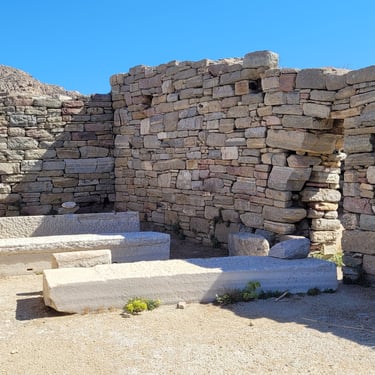
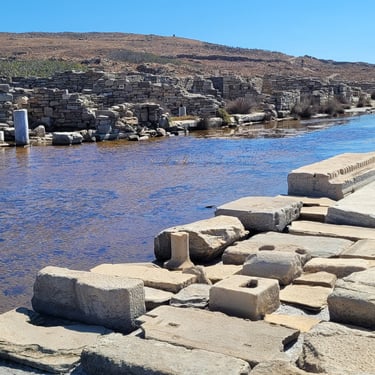
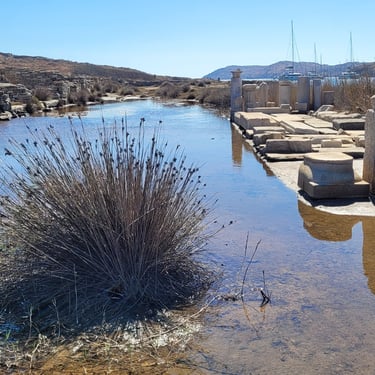
Agora of the Competaliasts
Dates to the last quarter of the 2nd century BC, this is an agora (public space and commercial center) directly adjacent to the Sacred Harbor. The bases of a square and a round marble monument, both dedicated to Hermes, can be found in the center of the market square. Around these two monuments, one can see the remains of many other monuments erected by merchants, sea captains, and bankers. In the northern portion of this market, one can find the Portico of Philip and an Ionic temple dedicated to Hermes. In the eastern and southern portions are the remains of shops from the golden days of this Hellenic commerce center. The ground is paved with stones of gneiss and there are holes in the stones where tent poles would have gone.
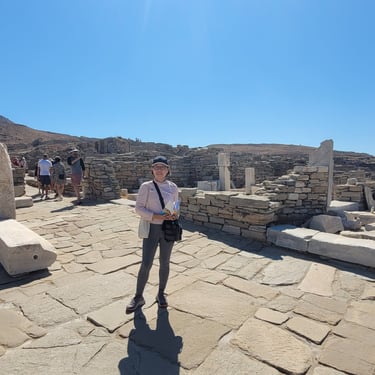
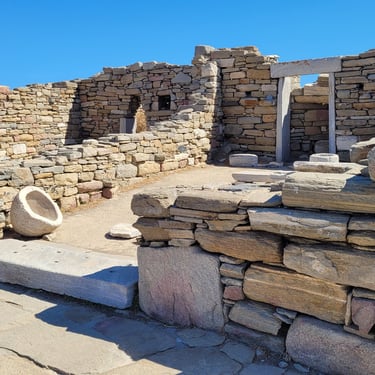

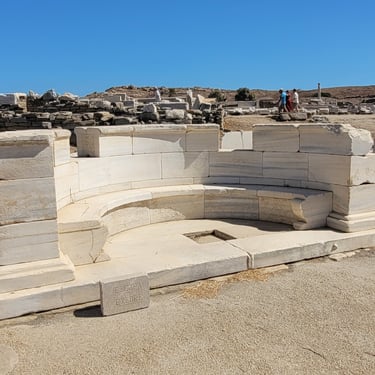
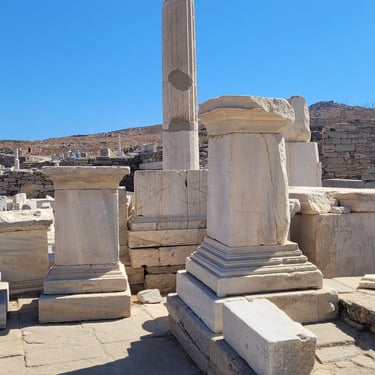
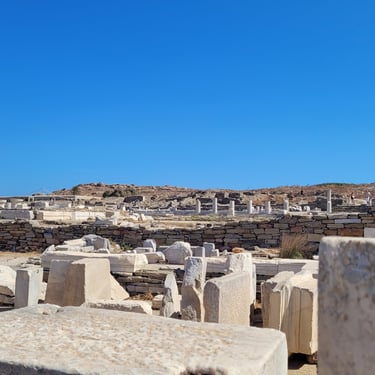
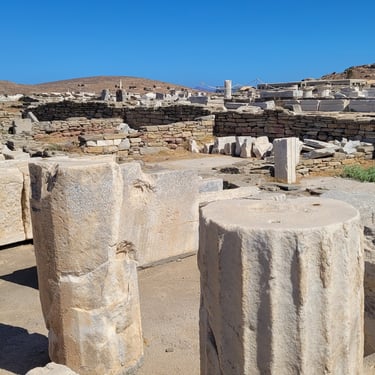
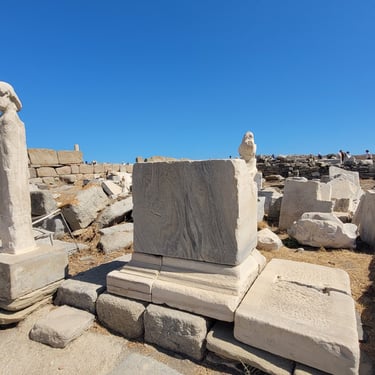
The Religious Center (Apollo & Artemis Temple)
The Apollonian sanctuary, established at least since the 9th cent. BC, reached the peak of its glory during the archaic (7th-6th cent. BC) and classical (5th-4th cent. BC) period, when Hellenes from all over the Greek world gathered there to worship Apollo, the god of light, harmony, and balance, and his twin sister Artemis, the moon-goddess.
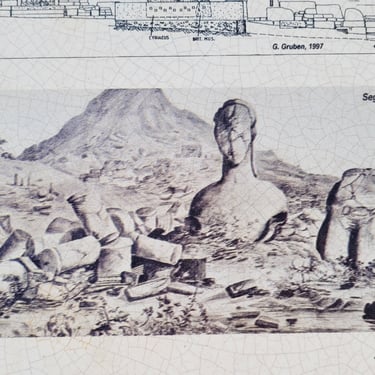
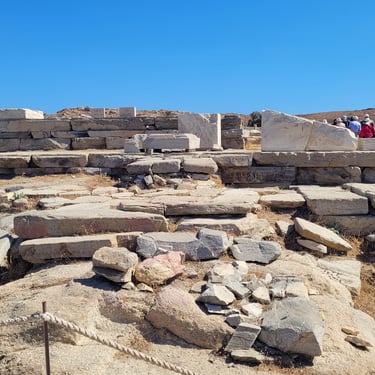
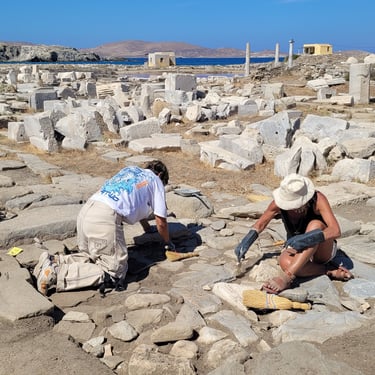
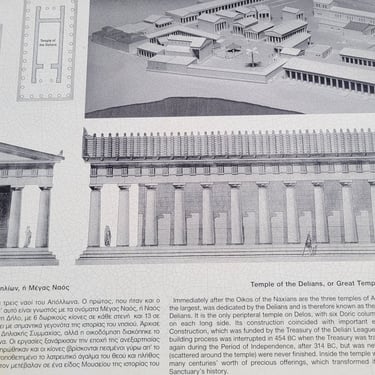
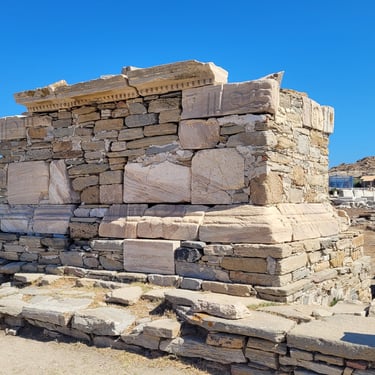
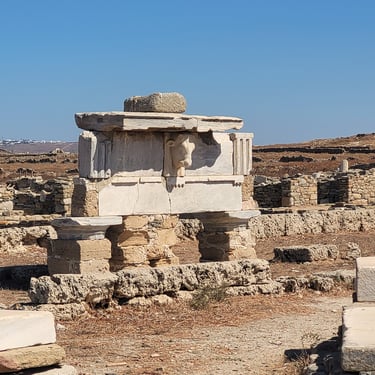
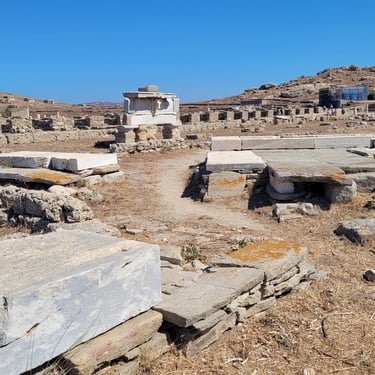
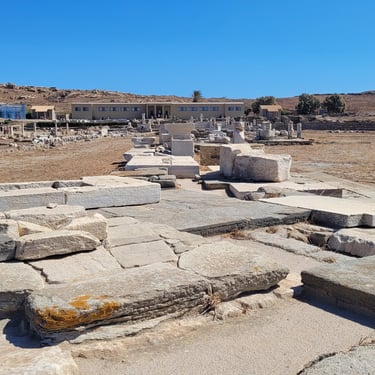
Terrace of the Lions
This terrace was erected and dedicated to Apollo by the people of Naxos just before 600 BCE. The terrace consisted of a row of nine to twelve marble carved lions that faced eastward towards the Sacred Lake of Delos along the Sacred Way from Skardana Bay to the temples. The lions, with their mouths open as if roaring or snarling, were both meant to guard the sanctuaries and to inspire a feeling of divine fear among the worshippers. The way in which they were positioned is similar to the way sphinxes were set up along avenues in ancient Egypt. Today, only five of the original lions remain with remnants of three others and the headless body of another has been transported and put over the main gate of a Venetian arsenal.
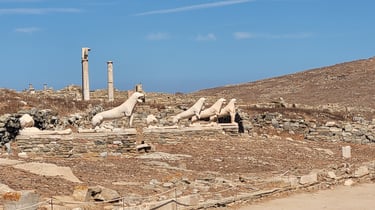

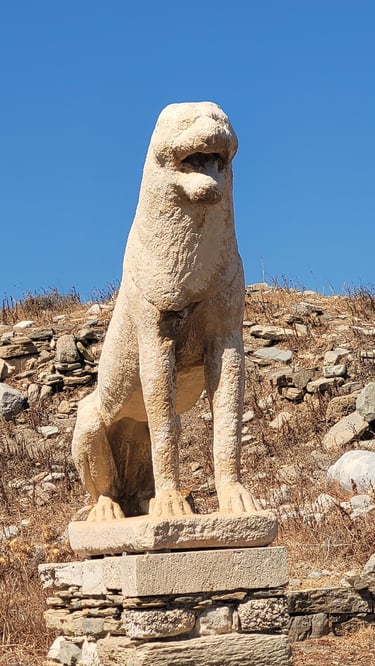



Koinon of the Poseidon
Also known as the House of the Poseidoniastai of Beryttos, this is a building served as a guild hall or clubhouse for Syrian merchants and ship owners from Beirut, who identified their primary god Baal with the Greek Poseidon, hence the name "Poseidoniasts"; essentially, it was a meeting place for this group of traders who worshipped Poseidon as their main deity.
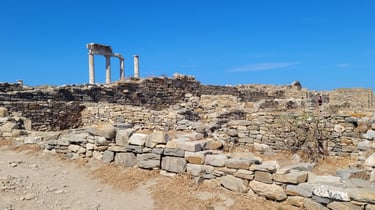
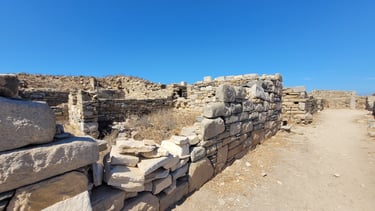
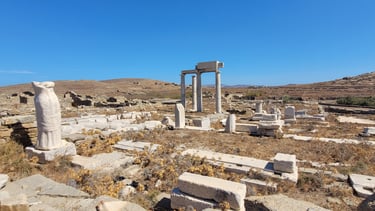
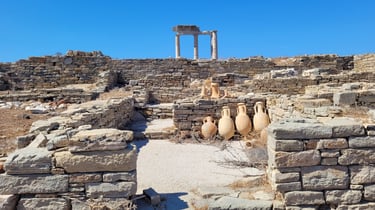
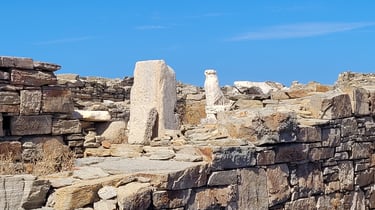
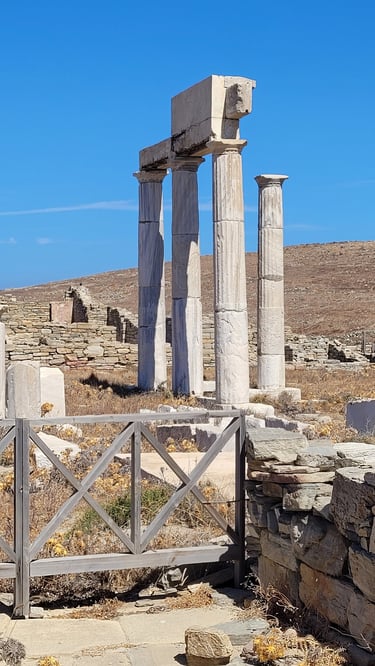
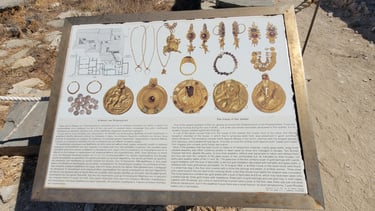







The Roman Wall & the Agora of the Italians
This is a large, impressive Roman market square built by Italian merchants, featuring a substantial colonnade surrounding a central courtyard, essentially acting as a commercial hub for Roman traders on the island; it is one of the most prominent archaeological features on Delos, showcasing the significant Roman presence during antiquity.


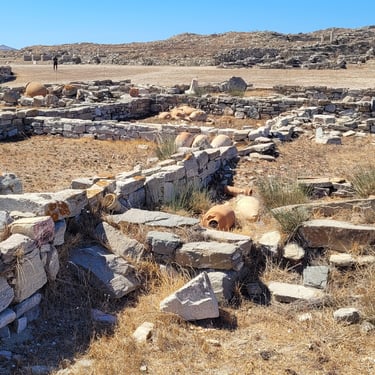
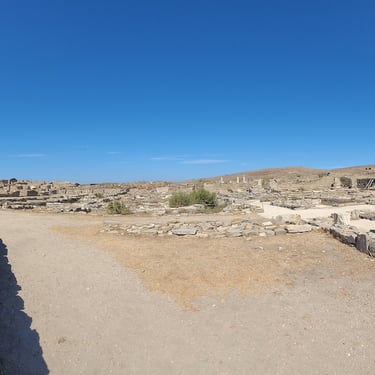

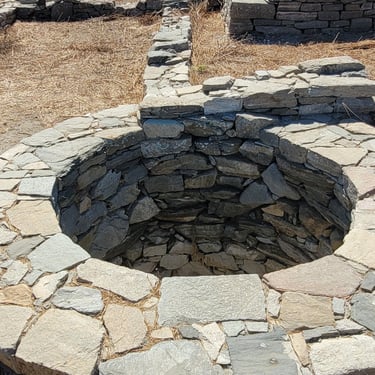
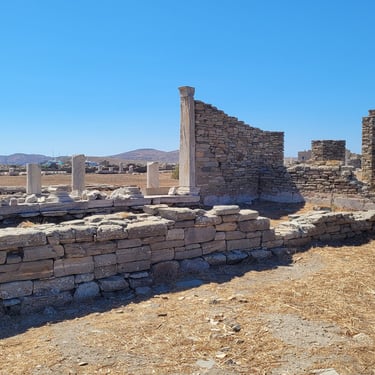
The Lake House
The "Lake House" is a well-preserved ancient Greek house on the north end of the archaeological site of Delos. Considered as one of the most elegant residences there, it is notable for its intricate mosaic floors and a design that likely centered around a courtyard with a "lake" feature, possibly a pool or well.
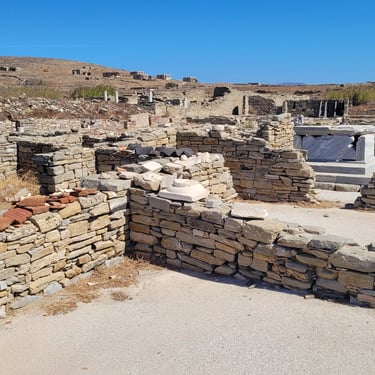


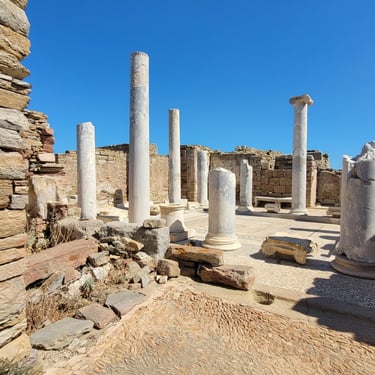
Terrance of Foreign Gods
This is an archaeological area on the island where temples dedicated to deities from other cultures, particularly Egyptian gods like Isis and Serapis, were built, signifying the presence and worship of foreign gods by the diverse population of the ancient trading hub of Delos; essentially a designated space for non-Greek deities on the sacred island.
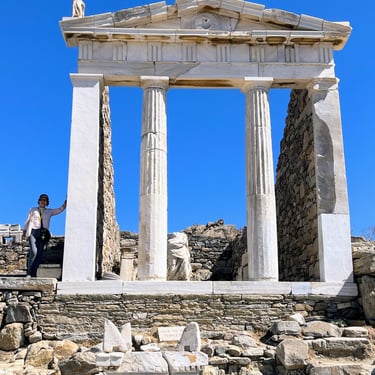
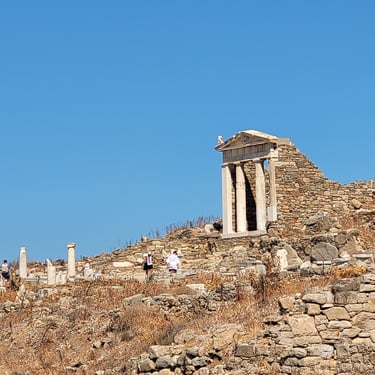
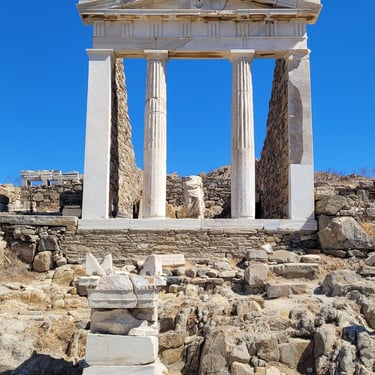
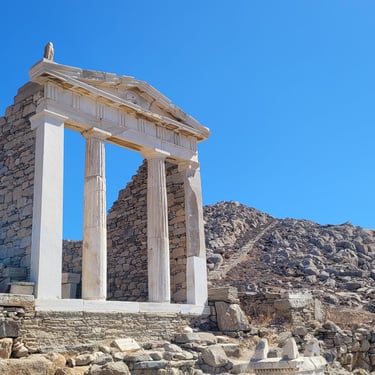
The Mosaics in House of Dolphins & House of Masks
The House of the Dolphins is an ancient Greek house on the island of Delos, Greece. It's known for its well-preserved floor mosaic featuring dolphins and winged figures.
Floor mosaic features a circle surrounded by a square, with dolphins in each corner of the square. The dolphins are ridden by winged figures holding symbols of Greek gods.
Central rosette features a rosette design surrounded by floral garlands and griffins.
Concentric circles with alternating patterns of garlands, waves, and geometric shapes.
Signature is one of only two examples from Delos with a signature of the original artist, Asclepiades of Arados.
The House of Masks is a large house with courtyards, and probably a colonnade on the outside northeast corner. It has walls painted to resemble marble. Mosaic pavements in 4 rooms depicting scenes related either to Dionysos or to drama. It may have served as a hostel for visiting troops of performers.
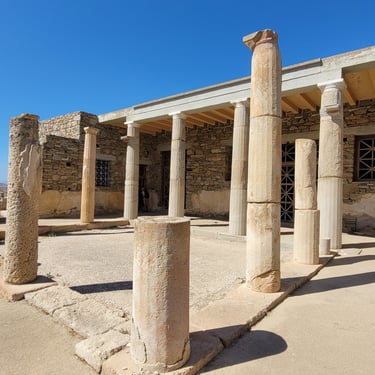
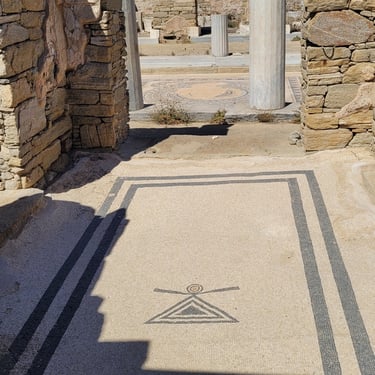
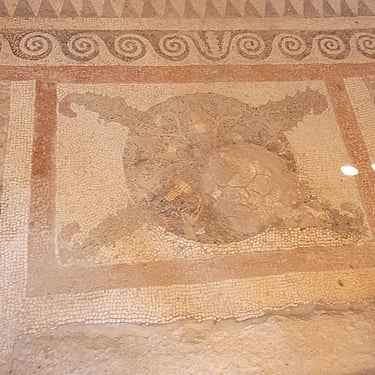
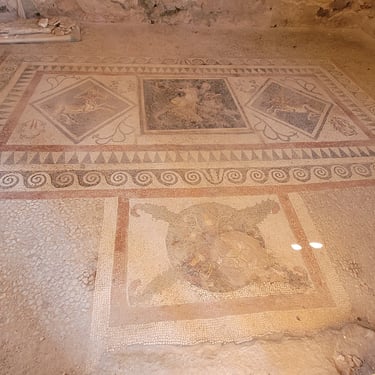
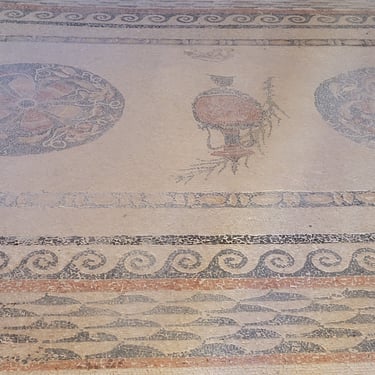
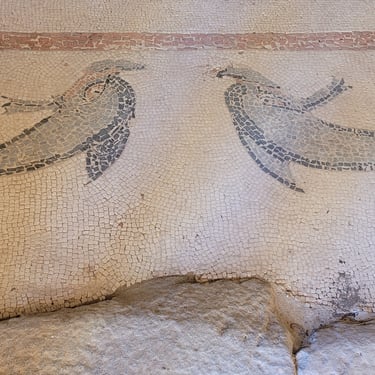
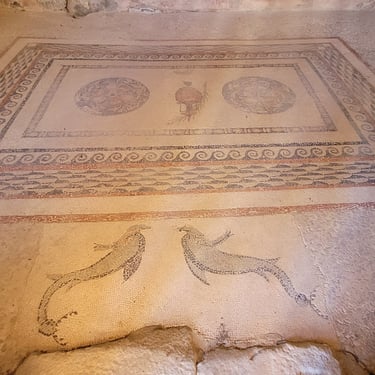
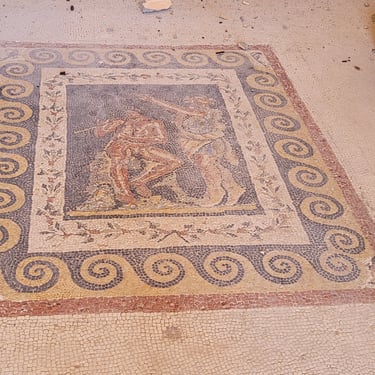
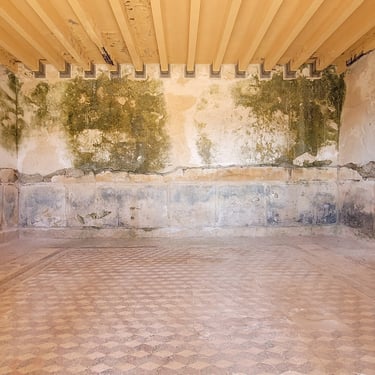
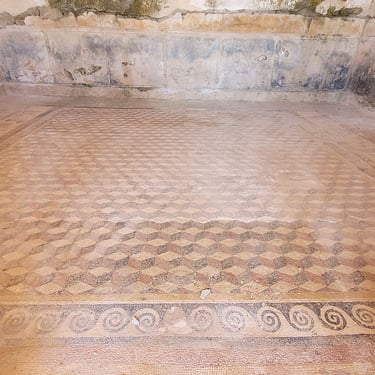
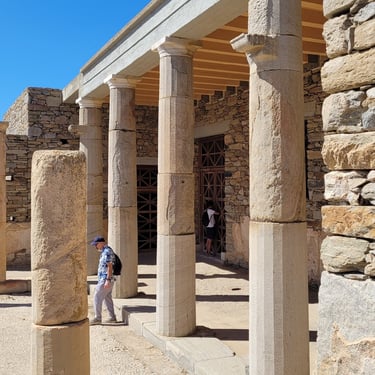
Mt. Kynthos - Temple of Zeus & Athena
Mt Kynthos (113m), southeast of the harbour, is a steep but rewarding climb. There are monuments such as the Temple of Hera and the Sanctuaries of Zeus Kynthios and Athena Kynthia, plus gorgeous views in clear weather. Due to the time constraints, regretfully a hike to the top wasn't possible.
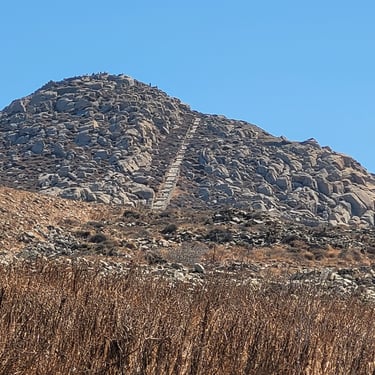
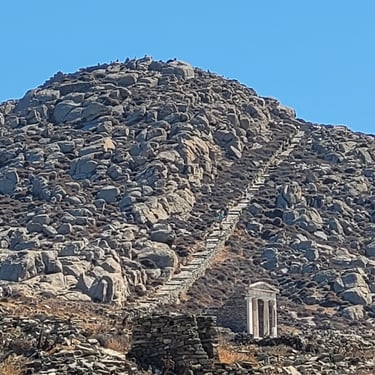
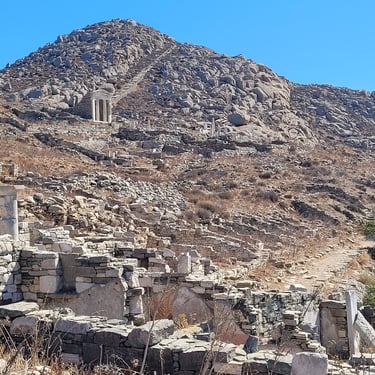
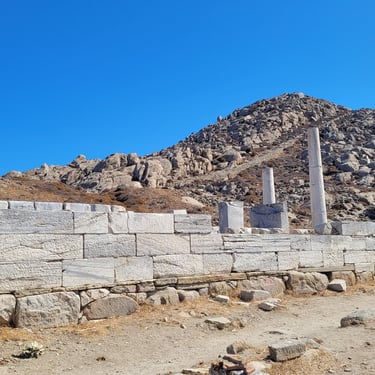
Archaeological Museum of Delos
The museum has a considerable collection, but we were told that it does not contain all of the items found in Delos. A large quantity of the artifacts discovered here at Delos are on display in Athens at the National Archaeological Museum.
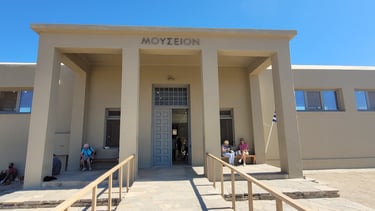
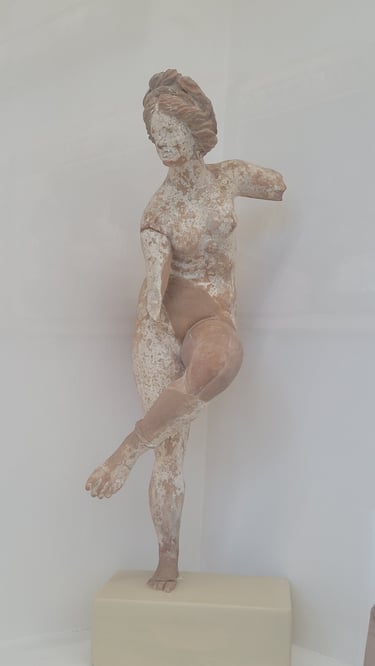
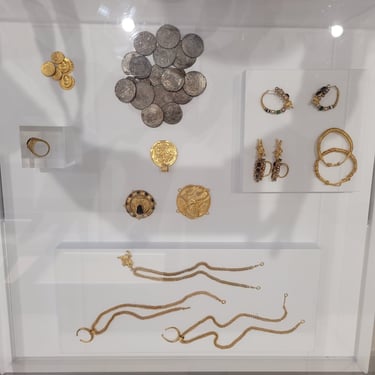
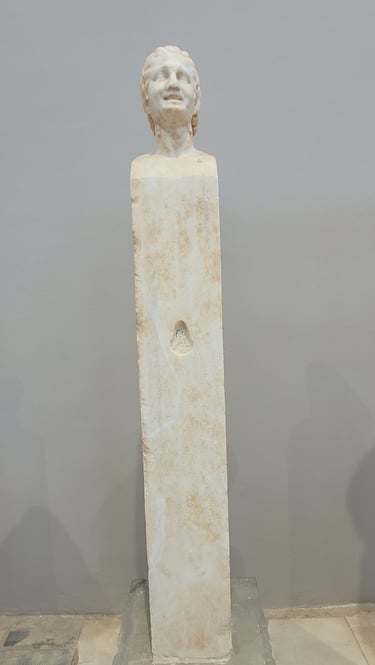
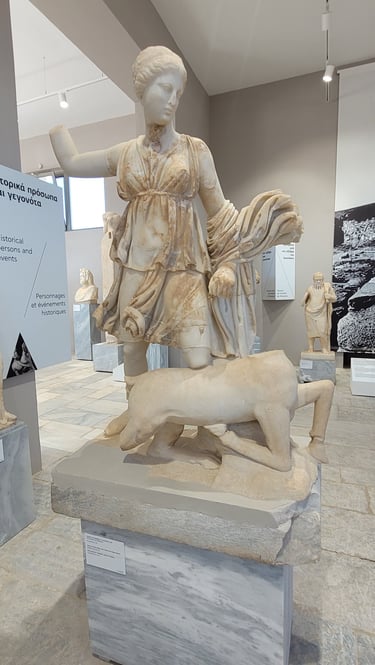
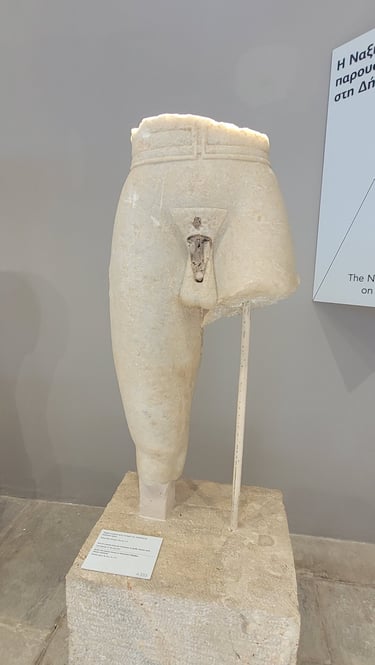
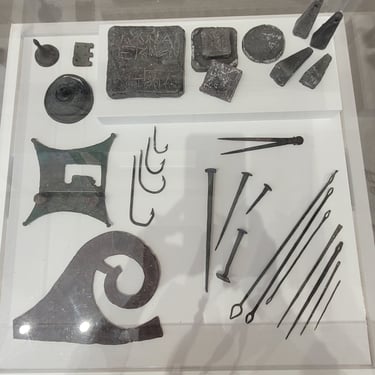
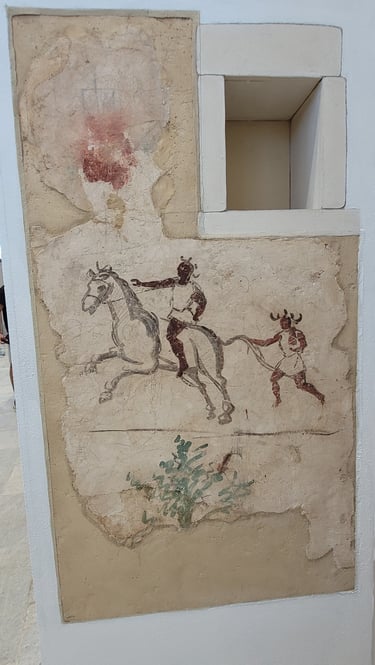
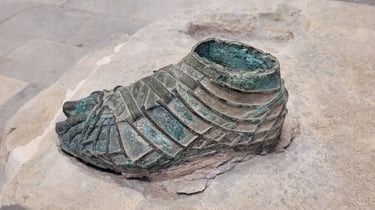
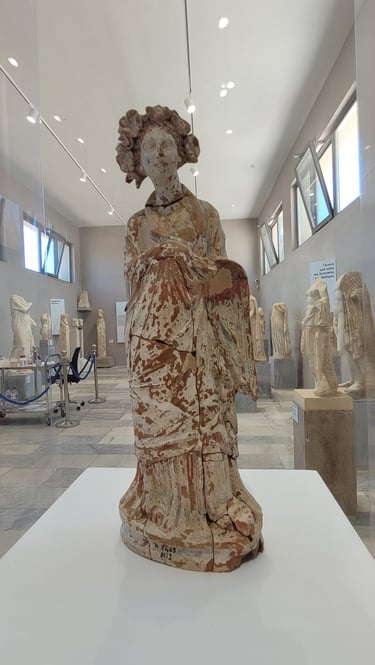
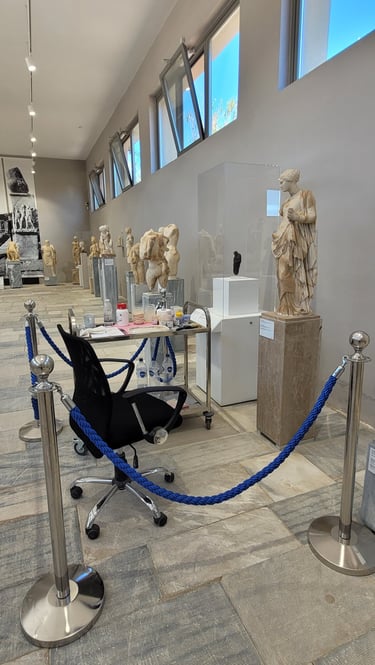
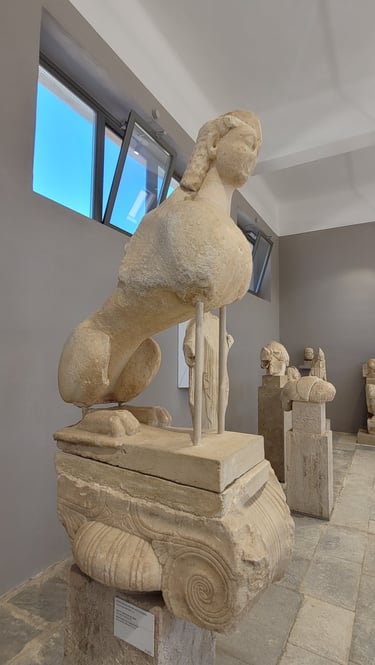
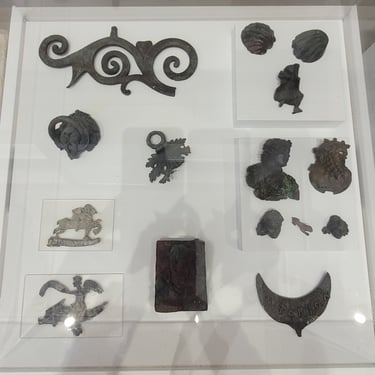
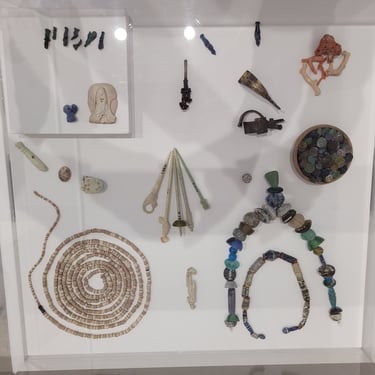
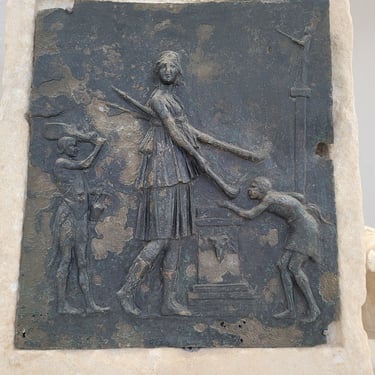
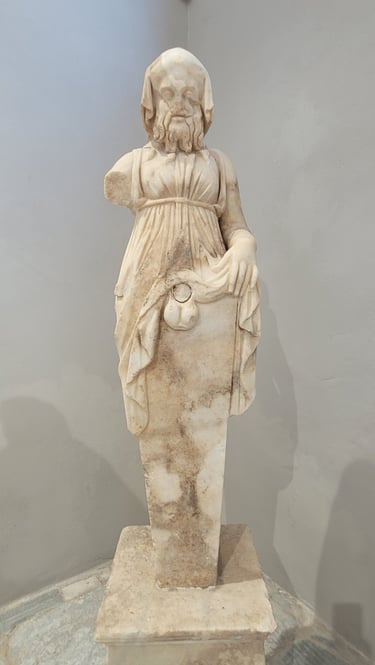
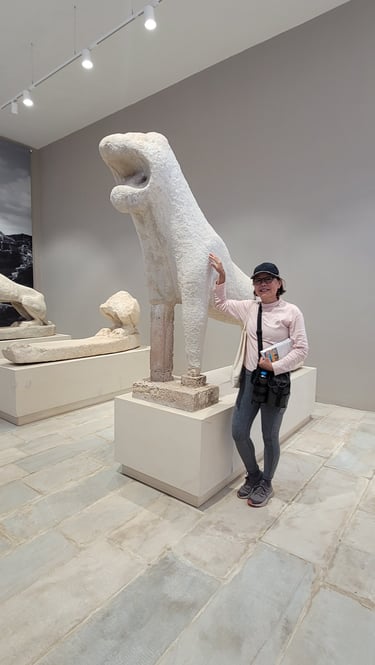

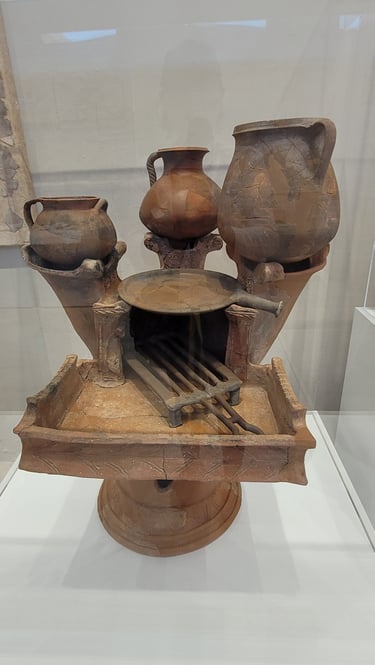
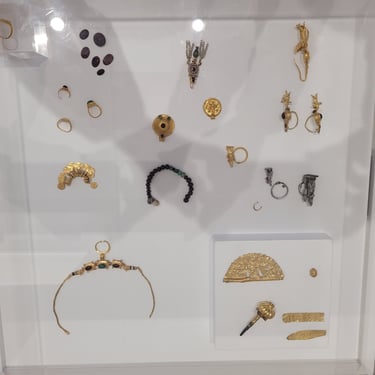
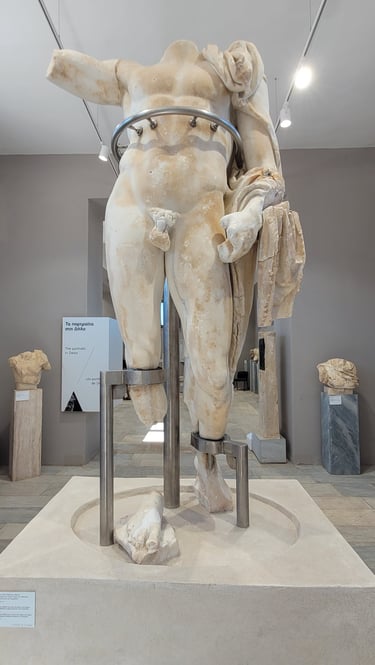
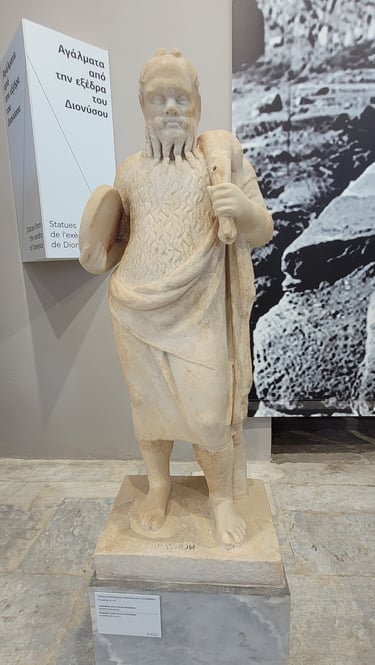
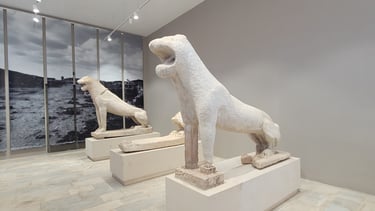
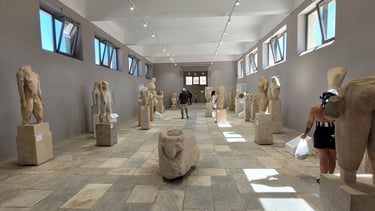
























Custom order? Questions?
Please contact me
ms.ting.lu@gmail.com
678-404-8084
In-person Classes & Workshops held in Ting Lu Design Studio in Alpharetta, GA 30022
